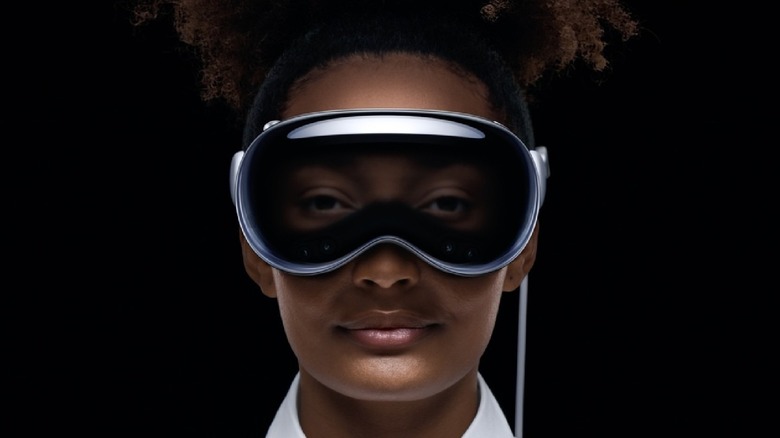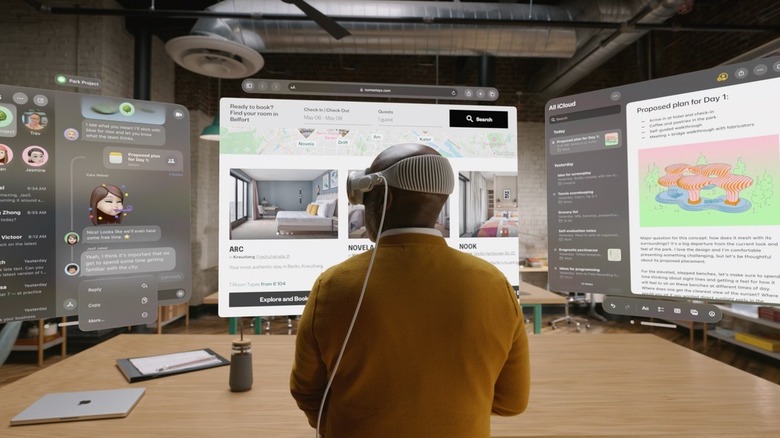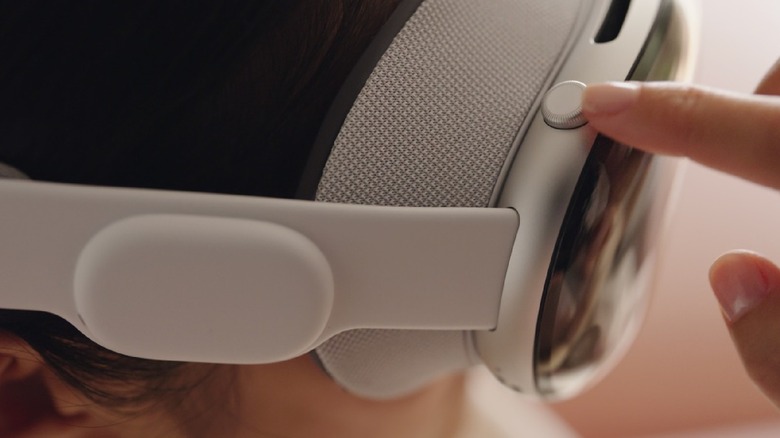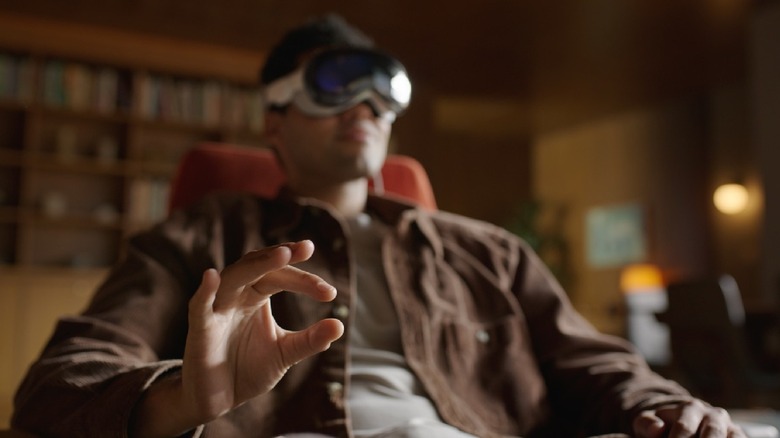Apple Vision Pro Headset Is Real, And It Expertly Blends AR With VR
After years of rumors, speculation, and disappointments, Apple has finally unveiled its high-end augmented-reality headset, and as expected, the headset isn't going to come cheap. The long-awaited headset is called the "Apple Vision Pro."
During the unveiling, Cook referenced the long wait, saying: "It's already been a big day. But, we do have one more thing. This is a day that has been years in the making, one I have really been looking for today. I believe AR is a profound technology, blending digital content with real work can unlock experiences unlike anything we've ever seen."
One standout feature is "eyesight" which allows you to see other people in the room while wearing the headset, and also allows them to see your eyes through the exterior glass. This feature automatically activates when someone comes within range of your headset. It also allows apps like FaceTime to become "spatial," and allows increased interaction with other apps Apple users will be familiar with, like photos and video.
The headset seems to be AR-focused
Apple seems to have joined Meta in going down the productivity path, instead of catering specifically to the gaming market. The headset is controlled with a user's "eyes, hands, and voice" instead of controllers. Expect advanced hand and eye tracking as standard. Gestures themselves are designed to be "subtle and natural," and Siri also plays a part.
Users can utilize a variety of apps, and scale them to their needs. If you hate looking at your living room, "environments" can also be added to change your backdrop, and their transparency can be altered via a wheel on the headset. It also syncs with iCloud, and interacts seamlessly with the rest of Apple's ecosystem. If you must have some form of input, Vision Pro will automatically connect with a Mac or iPhone, and can connect to things like keyboards via Bluetooth.
Apple has suggested it could particularly benefit remote workers, and people who regularly attend virtual meetings. The device also has a slim profile, which could mean it is comfortable to wear for extended periods. As current VR-users may know, this is vital when working in a headset for an extended period, or if you're using one as a home entertainment system.
As far as gaming is concerned, Apple did give a glimpse of some capability — however, there is nothing to suggest you'll get a similar experience to the one currently offered by devices like the Quest 2 headset.
Expect industry-leading specs
Apple has gone all-out with the Vision Pro's hardware. The headset is packed with advanced sensors, tailored for comfort, and backed by a pair of powerful chips. Apple's flagship M2 chip is responsible for the Vision Pro's computing power, while the new "R1" chip is there to handle input from its array of sensors, which include "12 cameras, five sensors, and six microphones."
Those sensors are pretty advanced, and they have to be if the headset's iris recognition, eye tracking, hand tracking, and passthrough features are to work as intended. The chips, along with the headset's general design, allow for it to run quietly and clearly, which is what users are likely to want from a computer that is strapped to their face.
The real standout feature of Apple's headset is its display, which boasts "23 million pixels" across two displays, meaning each eye will be looking at more little dots than you'd get on a 4K TV. This level of pixel density should be enough to ensure an extreme level of detail, and completely eliminate the "screen door" effect which has been a problem head-mounted displays have faced for years. This is almost essential for a work-focused headset, as it allows text to be viewed clearly.
One potential shortcoming comes in the power supply department. Apple boasts the headset will run all day if wired — like every other headset with a cable connection — and the external battery can provide up to two hours of wireless performance.
As you may expect, the headset is incredibly expensive
The headset contains a lot of cutting-edge and industry-leading technology, and as with many of Apple's premium products, there's a premium price tag to match it. The entry-level device starts at $3,499 — more than double the cost of the Quest Pro at launch, and more than triple the price of Meta's flagship device.
While the price point may shut a lot of potential users out, Apple is arguably in a better position to charge an exorbitant price for VR hardware than Meta was when it launched the Quest Pro. While both companies will be hoping to take advantage of hardcore VR enthusiasts and early adopters, Meta's primary customer base bought in at $299 with the Quest 2. Apple's customers are used to paying a premium price for what is billed as a premium product.
Apple says its new headset will be available "early next year."



